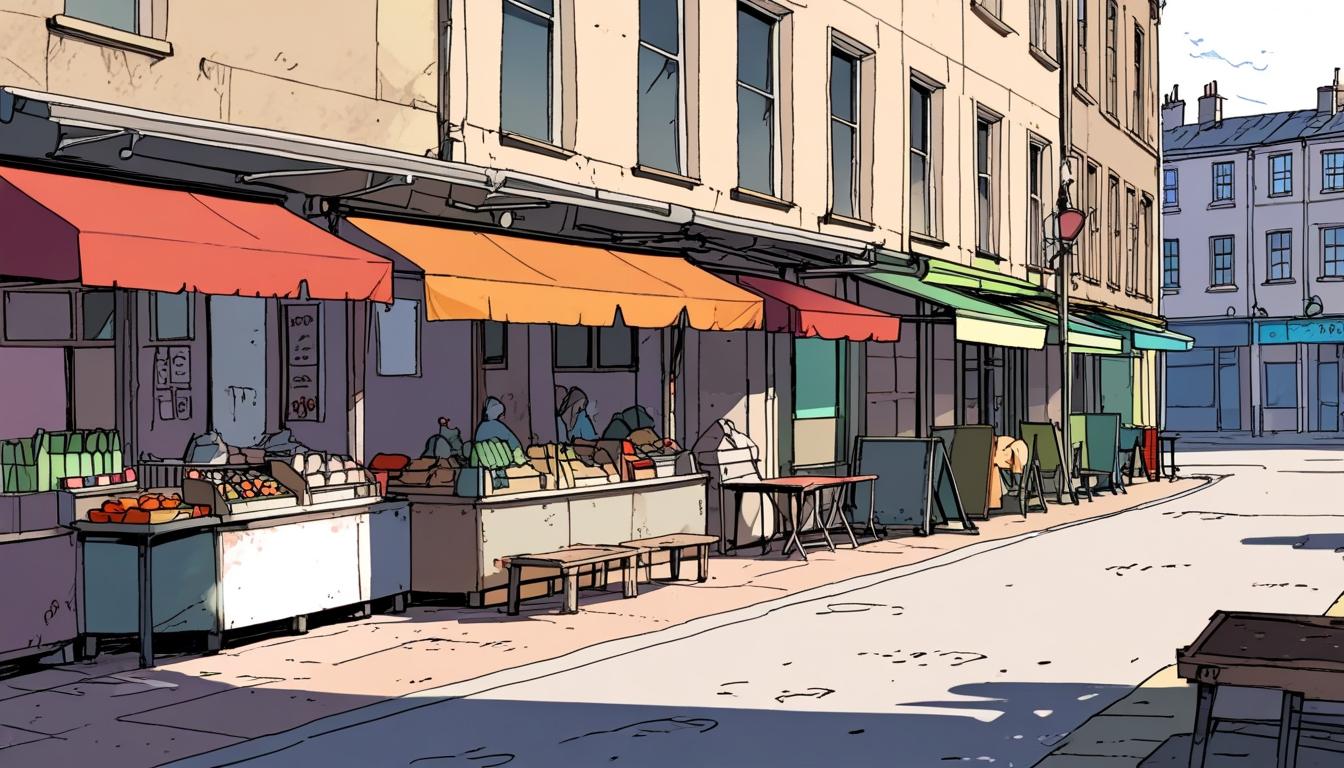The recent closure of a street-food market in Aberdeen has sparked serious concerns about the viability of such ventures in today’s urban climate. Launched in 2022 with a troubling £1.3 million loan funded by taxpayers, the market was envisioned as an “Instagrammers’ playground” and a cornerstone of the city’s alleged regeneration. However, its swift failure has revealed profound miscalculations about consumer preferences and the very essence of urban renewal.
Despite the initial enthusiasm of local councillors, who viewed the initiative as pivotal for revitalising Aberdeen’s city centre, the venue floundered, struggling to draw in customers. An investigation by The Press and Journal highlighted glaring flaws in the concept, which mistakenly placed social media at the heart of dining experiences. With merely four street food vendors, critics have accurately described the setup as reminiscent of a lackluster reality show, ultimately failing to conjure the vibrant atmosphere it promised.
The demise of this market is emblematic of a far broader crisis facing city centres throughout Scotland. The relentless advance of online shopping, compounded by the lingering repercussions of the COVID-19 pandemic, has put traditional retail and hospitality sectors in jeopardy. The shift toward remote work has further lessened footfall in urban centres, tightening the noose on the few businesses that manage to survive.
In Aberdeen, the ongoing refurbishment of Union Street aspires to create a more pedestrian-centric city centre. Meanwhile, a £50 million project to elevate the beachfront aims to establish a "world-class" attraction. However, many voice skepticism about the effectiveness of such ventures. As one commentator bluntly noted, “Will a pedestrian-focused layout provide any benefits if there’s nowhere worthwhile to walk to?”
It’s well known that Aberdeen continues to grapple with the fallout from the dramatic loss of nearly 20,000 jobs in the oil and gas sector, leaving numerous prime retail spaces empty. Current economic forecasts paint a dismal picture, placing Aberdeen near the bottom among UK cities in terms of projected growth. This alarming trend raises fundamental questions about the city's ability to attract new businesses and revitalize its economy.
Local authorities are under immense pressure to seek innovative solutions to rejuvenate the city. While the investment in the street-food market initially seemed promising, concerns abound regarding the wisdom of such financial commitments amidst a rapidly changing economic landscape. One could argue that if retail cannot be sustained in central areas, it’s time to consider repurposing vacant properties into affordable housing as a more sensibly pragmatic approach.
These pressing issues are not exclusive to Aberdeen. Cities like Edinburgh and Glasgow, too, are struggling with empty shops and deteriorating urban designs. The clarion call for a unified approach to economic recovery is becoming increasingly urgent, with calls for the national government to take a more decisive role in revitalising these urban landscapes. Critical improvements to transport infrastructure, including enhancements to the A90 and rail services, are essential for drawing in both visitors and residents.
As urban areas grapple with shifting consumer habits and lifestyle transitions, the notion that Aberdeen could revert to its former glory grows ever more fanciful. Nonetheless, the prospects for a vibrant city that genuinely meets contemporary needs remain attainable—provided there is a willingness to embrace radical and innovative solutions. The fate of projects like this recent market serves as a stark reminder of the need for a comprehensive and sustainable strategy for urban regeneration in a world characterized by unpredictable economic and social shifts.
Source: Noah Wire Services
